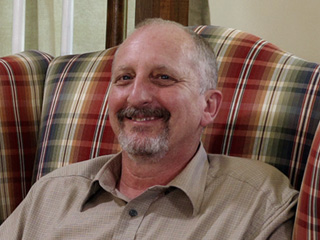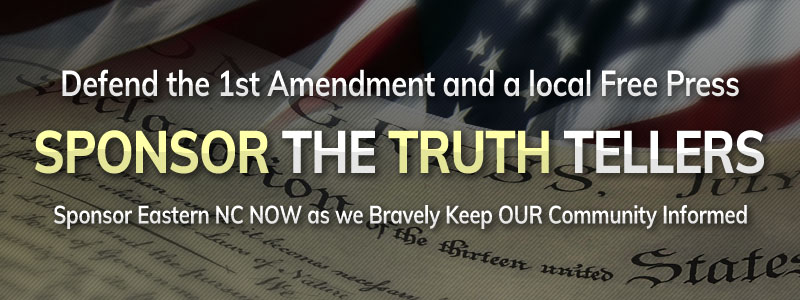The Human Touch Revealing All that is Real
JLF: Budget Changes Set Better Course
Publisher's note: The author of this post is CJ Staff, who Print Columnists for the Carolina Journal, John Hood Publisher.
RALEIGH Legislators have raised teacher pay, set aside money for potential Medicaid cost overruns, and made a major positive change in the state budget process. A new John Locke Foundation Spotlight report points to all three accomplishments in the 2014-15 state spending plan signed into law this month.
"The large teacher pay raise and the increased Medicaid funding attracted the most attention, but changing the budget process itself might lead to the most positive long-term benefits for North Carolina taxpayers," said report co-author Sarah Curry, JLF Director of Fiscal Policy Studies. "By discarding a series of estimates known as the 'continuation budget' and using the more realistic 'base budget,' future budget discussions should feature more accuracy and less confusion."
The 2014-15 General Fund budget appropriates almost $21.1 billion. "That represents an increase of about 2.2 percent, which is less than the combination of inflation plus population growth," Curry said.
Most reports about the new budget have focused on an average teacher salary increase of 7 percent, "one of the largest pay raises for North Carolina teachers in a generation," according to the report. The budget sets aside $282 million for teacher raises.
"Republican legislators have increased the K-12 education budget in each fiscal year since they have been in the majority in the General Assembly," said report co-author Dr. Terry Stoops, JLF Director of Research and Education Studies. "With an elementary and secondary education budget that exceeds $8.1 billion, this year's spending plan represents a 3 percent increase over last year's education budget."
School administrators and full-time support personnel also get raises in the new spending plan, and Stoops points to other education-related budget items.
"The legislative leadership championed practices designed to improve classroom instruction and other innovative policies," he said. "The budget adds funds for Advanced Placement testing fees and teacher instruction. Lawmakers mandated a slight decrease in kindergarten and first-grade class sizes. They continued efforts to develop a much-needed performance and incentive pay program for teachers. Most importantly, they made a significant revision to the structure of North Carolina's 90-year-old teacher salary schedule."
Lawmakers expanded school choice and alternative learning environments, Stoops said. "Six additional Cooperative and Innovative High Schools, two new virtual charter schools, and an extra $400,000 for the state's Opportunity Scholarship Program all represent efforts to foster the kind of competition and innovation that will lead to better educational opportunities for all students."
Combining local, federal, and capital funds with General Fund spending, the total budget for North Carolina's public schools will approach $13 billion, Stoops said. "As impressive as that might sound, it is unlikely that taxpayers' massive investment in public schools will raise student achievement or curb discontent among those who cultivate it for political and financial gain."
Medicaid takes up 18 percent of the General Fund budget and 72 percent of the budget for the N.C. Department of Health and Human Services. "Lawmakers budgeted a $227 million increase for Medicaid, though a backlog of unpaid claims and a large enrollment increase have caused uncertainty about the final budget figure," Curry said. "To be cautions, legislators decided to create a Medicaid contingency fund of $186 million for any unexpected shortfalls."
After conducting a more transparent budget-writing process than in past years, with a number of joint House-Senate budget conference committee meetings held in sessions open to the public, lawmakers also made an important change to future budgets, Curry said.
"Historically, the state's budget development started with a series of estimates about the amount of funding necessary to continue the same level of government services in the next budget," she said. "This was called the continuation budget. This figure caused confusion because some commentators and analysts characterized it as a baseline. Any spending increase that fell below the continuation budget was labeled a cut. But the continuation budget was never an actual spending figure -- only a calculation used for the budgeting process."
Beginning with the 2015-17 budget process, the starting point will be the "base budget," which is based on actual spending. "This change offers a more realistic starting point for budget writers," Curry said. "It represents actual spending figures from the prior year, rather than arbitrary calculations and state agency wish lists."
"Year-to-year budget comparisons should be easier and less confusing for budget writers, analysts, and citizens alike," she added. "It will also make political manipulation of the budget process more difficult."
The high priority placed on teacher pay increases and Medicaid spending growth set the course for this year's budget negotiations, Curry said. "When a budget has programs that consume a large share of total appropriations, other areas of the budget must fight for the scarce revenue that remains."
Budget writers need to focus on the core constitutional functions of government, Curry said. "This requires the use of fiscally responsible principles when making budget decisions that support these core functions today and for future generations of North Carolinians," she said. "Lawmakers must also continue to limit regulation and taxation of private enterprise and find new ways to engage nonprofits and community groups to further their legislative goals."
Go Back
Analysts detail impact of teacher pay, Medicaid on 2014-15 budget
RALEIGH Legislators have raised teacher pay, set aside money for potential Medicaid cost overruns, and made a major positive change in the state budget process. A new John Locke Foundation Spotlight report points to all three accomplishments in the 2014-15 state spending plan signed into law this month.
"The large teacher pay raise and the increased Medicaid funding attracted the most attention, but changing the budget process itself might lead to the most positive long-term benefits for North Carolina taxpayers," said report co-author Sarah Curry, JLF Director of Fiscal Policy Studies. "By discarding a series of estimates known as the 'continuation budget' and using the more realistic 'base budget,' future budget discussions should feature more accuracy and less confusion."
The 2014-15 General Fund budget appropriates almost $21.1 billion. "That represents an increase of about 2.2 percent, which is less than the combination of inflation plus population growth," Curry said.
Most reports about the new budget have focused on an average teacher salary increase of 7 percent, "one of the largest pay raises for North Carolina teachers in a generation," according to the report. The budget sets aside $282 million for teacher raises.
"Republican legislators have increased the K-12 education budget in each fiscal year since they have been in the majority in the General Assembly," said report co-author Dr. Terry Stoops, JLF Director of Research and Education Studies. "With an elementary and secondary education budget that exceeds $8.1 billion, this year's spending plan represents a 3 percent increase over last year's education budget."
School administrators and full-time support personnel also get raises in the new spending plan, and Stoops points to other education-related budget items.
"The legislative leadership championed practices designed to improve classroom instruction and other innovative policies," he said. "The budget adds funds for Advanced Placement testing fees and teacher instruction. Lawmakers mandated a slight decrease in kindergarten and first-grade class sizes. They continued efforts to develop a much-needed performance and incentive pay program for teachers. Most importantly, they made a significant revision to the structure of North Carolina's 90-year-old teacher salary schedule."
Lawmakers expanded school choice and alternative learning environments, Stoops said. "Six additional Cooperative and Innovative High Schools, two new virtual charter schools, and an extra $400,000 for the state's Opportunity Scholarship Program all represent efforts to foster the kind of competition and innovation that will lead to better educational opportunities for all students."
Combining local, federal, and capital funds with General Fund spending, the total budget for North Carolina's public schools will approach $13 billion, Stoops said. "As impressive as that might sound, it is unlikely that taxpayers' massive investment in public schools will raise student achievement or curb discontent among those who cultivate it for political and financial gain."
Medicaid takes up 18 percent of the General Fund budget and 72 percent of the budget for the N.C. Department of Health and Human Services. "Lawmakers budgeted a $227 million increase for Medicaid, though a backlog of unpaid claims and a large enrollment increase have caused uncertainty about the final budget figure," Curry said. "To be cautions, legislators decided to create a Medicaid contingency fund of $186 million for any unexpected shortfalls."
After conducting a more transparent budget-writing process than in past years, with a number of joint House-Senate budget conference committee meetings held in sessions open to the public, lawmakers also made an important change to future budgets, Curry said.
"Historically, the state's budget development started with a series of estimates about the amount of funding necessary to continue the same level of government services in the next budget," she said. "This was called the continuation budget. This figure caused confusion because some commentators and analysts characterized it as a baseline. Any spending increase that fell below the continuation budget was labeled a cut. But the continuation budget was never an actual spending figure -- only a calculation used for the budgeting process."
Beginning with the 2015-17 budget process, the starting point will be the "base budget," which is based on actual spending. "This change offers a more realistic starting point for budget writers," Curry said. "It represents actual spending figures from the prior year, rather than arbitrary calculations and state agency wish lists."
"Year-to-year budget comparisons should be easier and less confusing for budget writers, analysts, and citizens alike," she added. "It will also make political manipulation of the budget process more difficult."
The high priority placed on teacher pay increases and Medicaid spending growth set the course for this year's budget negotiations, Curry said. "When a budget has programs that consume a large share of total appropriations, other areas of the budget must fight for the scarce revenue that remains."
Budget writers need to focus on the core constitutional functions of government, Curry said. "This requires the use of fiscally responsible principles when making budget decisions that support these core functions today and for future generations of North Carolinians," she said. "Lawmakers must also continue to limit regulation and taxation of private enterprise and find new ways to engage nonprofits and community groups to further their legislative goals."
| 501(c)3 Tax-exempt / Non-profit institutions like Vidant | Carolina Journal, Editorials, Op-Ed & Politics | Counting Costs of Crony Shenanigans |
Latest Op-Ed & Politics
|
this at the time that pro-Hamas radicals are rioting around the country
Published: Thursday, April 25th, 2024 @ 8:01 am
By: John Steed
|
|
Pro death roundtable
Published: Wednesday, April 24th, 2024 @ 12:39 pm
By: Countrygirl1411
|
|
populist / nationalist anti-immigration AfD most popular party among young voters, CDU second
Published: Wednesday, April 24th, 2024 @ 11:25 am
By: John Steed
|
|
political scheme behhind raid on Mar-a-Lago
Published: Wednesday, April 24th, 2024 @ 9:16 am
By: John Steed
|
|
how many of these will come to North Carolina?
Published: Tuesday, April 23rd, 2024 @ 1:32 pm
By: John Steed
|
|
Barr had previously said he would jump off a bridge before supporting Trump
Published: Tuesday, April 23rd, 2024 @ 11:37 am
By: John Steed
|
|
Babis is leader of opposition in Czech parliament
Published: Tuesday, April 23rd, 2024 @ 10:28 am
By: John Steed
|
|
illegal alien "asylum seeker" migrants are a crime wave on both sides of the Atlantic
Published: Tuesday, April 23rd, 2024 @ 9:44 am
By: John Steed
|






















